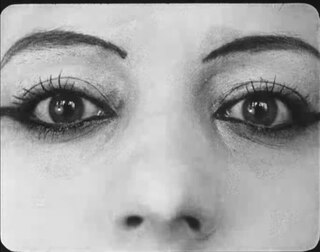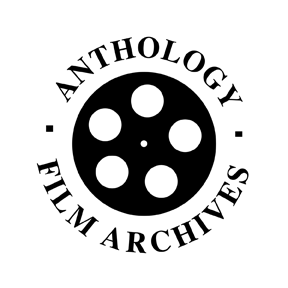Related Research Articles

Dog Star Man is a series of short experimental films, all directed by Stan Brakhage, featuring Jane Wodening. It was released in installments between 1961 and 1964 and comprises a prelude and four parts. In 1992, Dog Star Man was included in its entirety in the annual selection of 25 motion pictures added to the National Film Registry of the Library of Congress. being deemed "culturally, historically, or aesthetically significant" and recommended for preservation.
Serene Velocity is a 1970 American experimental short film directed by Ernie Gehr. Gehr filmed it in the basement hallway of a Binghamton University academic building, using a static camera position and changing only the focal length of the camera. It is recognized as a key work of structural filmmaking and has been inducted into the U.S. National Film Registry.

In corpus linguistics, a hapax legomenon is a word or an expression that occurs only once within a context: either in the written record of an entire language, in the works of an author, or in a single text. The term is sometimes incorrectly used to describe a word that occurs in just one of an author's works but more than once in that particular work. Hapax legomenon is a transliteration of Greek ἅπαξ λεγόμενον, meaning "said once".
Fuji is a 1974 American animated short by Robert Breer.

Experimental film or avant-garde cinema is a mode of filmmaking that does not apply standard cinematic conventions, instead adopting non-narrative forms or alternatives to traditional narratives or methods of working. Many experimental films, particularly early ones, relate to arts in other disciplines: painting, dance, literature and poetry, or arise from research and development of new technical resources.
Rose Hobart is a 1936 experimental collage film created by the artist Joseph Cornell, who cut and re-edited the Universal film East of Borneo (1931) into one of America's most famous surrealist short films. Cornell was fascinated by the star of East of Borneo, an actress named Rose Hobart, and named his short film after her. The piece consists of snippets from East of Borneo combined with shots from a documentary film of an eclipse.

Anthology Film Archives is an international center for the preservation, study, and exhibition of film and video, with a particular focus on independent, experimental, and avant-garde cinema. The film archive and theater is located at 32 Second Avenue on the southeast corner of East 2nd Street, in a New York City historic district in the East Village neighborhood of Manhattan.
Structural film was an avant-garde experimental film movement prominent in the United States in the 1960s. A related movement developed in the United Kingdom in the 1970s.
Hollis William Frampton, Jr. was an American avant-garde filmmaker, photographer, writer, theoretician, and pioneer of digital art. He was best known for his innovative and non-linear structural films that defined the movement, including Lemon (1969), Zorns Lemma (1970), and Hapax Legomena (1971–1972), as well as his anthology book, Circles of Confusion: Film, Photography, Video: Texts, 1968–1980 (1983).

Zorns Lemma is a 1970 American structural experimental film by Hollis Frampton. Originally starting as a series of photographs, the non-narrative film is structured around a 24-letter classical Latin alphabet. It remains, along with Michael Snow's Wavelength and Tony Conrad's The Flicker, one of the best known examples of structural filmmaking.
Hapax Legomena is a seven-part film cycle by American experimental filmmaker Hollis Frampton. The complete cycle premiered in November 1972.

Mildred "Chick" Strand was an American experimental filmmaker, "a pioneer in blending avant-garde techniques with documentary". Chick Strand contributed to the movement of women's experimental cinema in the early 1960s–1970's. Strand's film making and directing approach incorporates personal elements from her own life experiences and societal forces and realities. The film Elasticity (1976) is an example of Strand's attempts at autobiographical work that also incorporates Strand's specific standpoint on certain social issues. Feminist issues and anthropological inquiries about the human condition are frequent themes in Strand's films. However, because Strand's films and work were often deeply personal and subjective, they were often rejected from male-dominated academic circles of anthropologists and critiqued for being non-academic works.
The Lead Shoes is a 1949 experimental film directed by Sidney Peterson at Workshop 20 at the San Francisco Art Institute. The film was made using distorting lenses. The film is a 17-minute black and white short.
Cat's Cradle is an experimental short film by Stan Brakhage, produced in 1959. The film was described by Brakhage as "sexual witchcraft involving two couples and a 'medium' cat."

Robert Carlton Breer was an American experimental filmmaker, painter, and sculptor.
Annette Michelson was an American art and film critic and writer. Her work contributed to the fields of cinema studies and the avant-garde in visual culture.
Fake Fruit Factory is a 1986 American experimental documentary film by Chick Strand.
Chumlum is a 1963 American experimental short film directed by Ron Rice.
The End is a 1953 American short film directed by Christopher Maclaine. It tells the stories of six people on the last day of their lives. It premiered at the San Francisco Museum of Modern Art as part of Frank Stauffacher's Art in Cinema series. Though the film met audience disapproval at its premiere, it was praised by critics as a "masterpiece" and "a great work of art".

Lemon is a 1969 American experimental short film directed by Hollis Frampton. It shows a lemon under slowly changing lighting conditions.
References
- ↑ THIRTY YEARS OF AMERICAN INDEPENDENT CINEMA ON EXHIBITION (1979) on MoMA.org
- ↑ The Criterion Channel
- ↑ Hollis Frampton Collection - Collection - Harvard Film Archive
- ↑ Your Daily Short: Hollis Frampton's "(nostalgia)" - MTV
- ↑ "25 Films Added to National Film Registry - News Releases (Library of Congress)". Loc.gov. 2003-12-16. Retrieved 2014-04-17.
- ↑ "Complete National Film Registry Listing". Library of Congress. Retrieved 2020-05-06.
- ↑ "Essential Cinema". Anthology Film Archives . Retrieved June 1, 2022.
- ↑ Treasure IV: American Avant-Garde Film, 1947-1986 (Image Entertainment)·Senses of Cinema
- ↑ A Hollis Frampton Odyssey ()-Criterion Collection